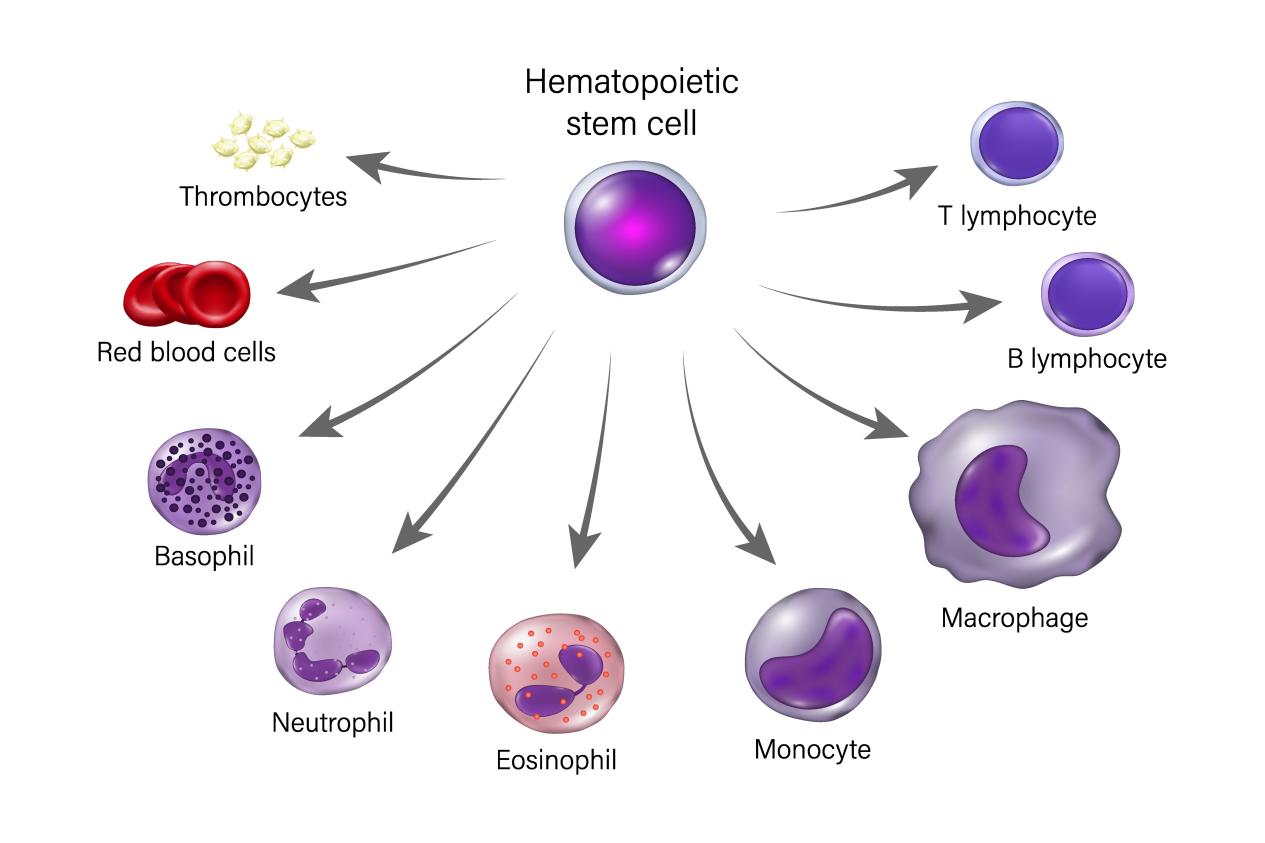Hematopoietic Stem Cell Differentiation Markers
About Hematopoietic Stem Cell Differentiation Markers
Hematopoietic stem cells (HSCs) are rare cells that are the source of all hematopoietic cells. HSCs develop from vasculogenic cells in the mesoderm. During hematopoiesis, HSCs respond to a variety of extracellular signals and differentiate into erythroid, lymphoid, and myeloid lineages. Within the hematologic system, only HSCs possess both pluripotency and self-renewal. Pluripotency is the ability to differentiate into all functional blood cells. Self-renewal is the self-replication of HSCs. Because mature blood cells (MBCs) have a short lifespan, HSCs are constantly supplied with more differentiated progenitor cells. At the same time, a precise balance of self-renewal and differentiation allows for the proper maintenance of the HSC pool size throughout life, which constitutes the so-called "stem cell ecotone". Therefore, understanding the mechanisms of self-renewal and differentiation of HSCs has been a central issue. With recent developments in the fields of multicolor flow cytometry, high-speed cell sorting, induced gene targeting, and advanced imaging technologies, we have gained a wealth of knowledge about the cellular and molecular mechanisms of HSCs development, self-renewal, and differentiation.

Available Resources of Hematopoietic Stem Cell Differentiation Markers
Creative BioMart provides tools to study changes in the expression of molecules that are thought to be markers of differentiated blood cell lineages. For example, human HSCs are characterized by high levels of CD34 expression. Cells that differentiate into lymphocytes, such as B-cells and T-cells, can be identified by detecting increased MS4A1/CD20 and CD4 expression, respectively. Antibodies can also be used to monitor the differentiation of HSC into myeloid cells such as granulocytes, macrophages, megakaryocytes, and platelets.
Creative BioMart offers products and resources related to hematopoietic stem cell differentiation markers, click to view all related molecules/targets and research reagents.
| Hematopoietic Progenitor Cell Markers | CD34, CD38, HMGB3, IL7R, KIT, CD10, CD45 |
| Lymphoid Lineage Markers | CD34, IL7R, CD10, CD19, CD2, CD22, CD3G, CD4, CD5, CD16a, FCGR3B, MS4A1, NCAM1, NCR1 |
| Myeloid Lineage Markers | CD34, CD38, KIT, CD16a, FCGR3B, Anpep, CCR2, CCR3, CD14, CD163, CD164, CD33, CD36, CD44, CD59, CD68, CD69, CEACAM1, CEACAM3, CEACAM5, CEACAM6, CEACAM8, CXCR3, GP1BA, GYPC, ITGA2B/CD41, ITGAM, LTBR, Integrin beta 3, LAMP1, MPO, PEAR1, PSG1, L-selectin, TPO |
Common Applications of Hematopoietic Stem Cell Differentiation Markers
Mechanisms of Hematopoietic stem cell differentiation markers are involved in the differentiation process and regulatory mechanisms of hematopoietic stem cells. The expression patterns and functional characteristics of these markers reflect cell fate decisions, cell type transformations, and the performance of specific functions during hematopoietic stem cell differentiation. The expression of hematopoietic stem cell differentiation markers is regulated by a series of transcription factors, cytokines, and signaling pathways. These regulatory mechanisms are critical for maintaining the self-renewal and multipotential differentiation capacity of hematopoietic stem cells. Common applications of these markers include but are not limited to:
- Identification and isolation of hematopoietic cells at different stages of differentiation.
- Revealing the stages of hematopoietic cell differentiation and gaining insight into the molecular mechanisms and regulatory networks of the differentiation process.
- Disease research: by studying the abnormal expression or mutation of markers, the pathogenesis of hematopoietic system diseases can be revealed, providing new targets and strategies for disease diagnosis and treatment.
If you are interested in or have any questions about the hematopoietic stem cell differentiation markers resource, please contact our customer service team. We look forward to working with you and providing you with professional support and service.
References:
- Seita J, Weissman I L. Hematopoietic stem cell: self-renewal versus differentiation[J]. Wiley Interdisciplinary Reviews: Systems Biology and Medicine, 2010.DOI:10.1002/wsbm.86.
- Patel A, Radia D. Haemopoiesis – the formation of blood cells[J]. Medicine, 2017, 45(4):194–197.DOI:10.1016/j.mpmed.2017.01.004.


